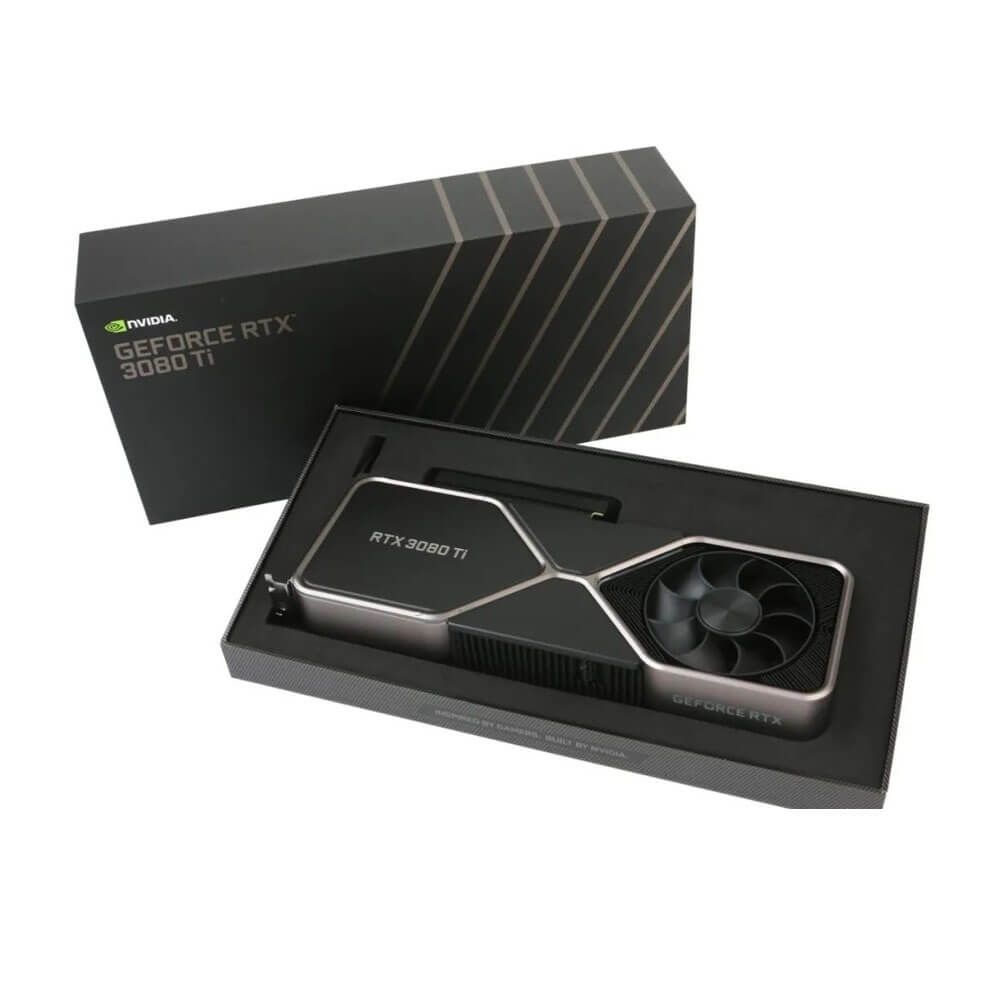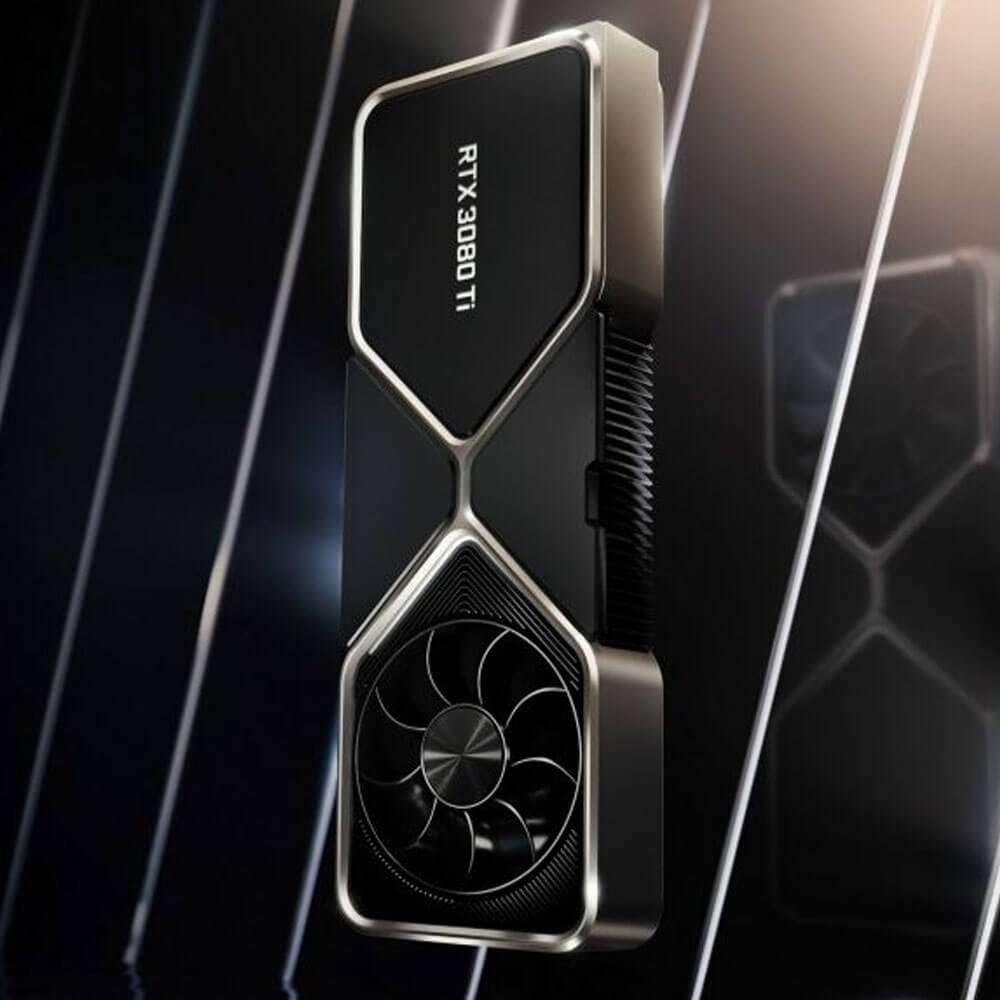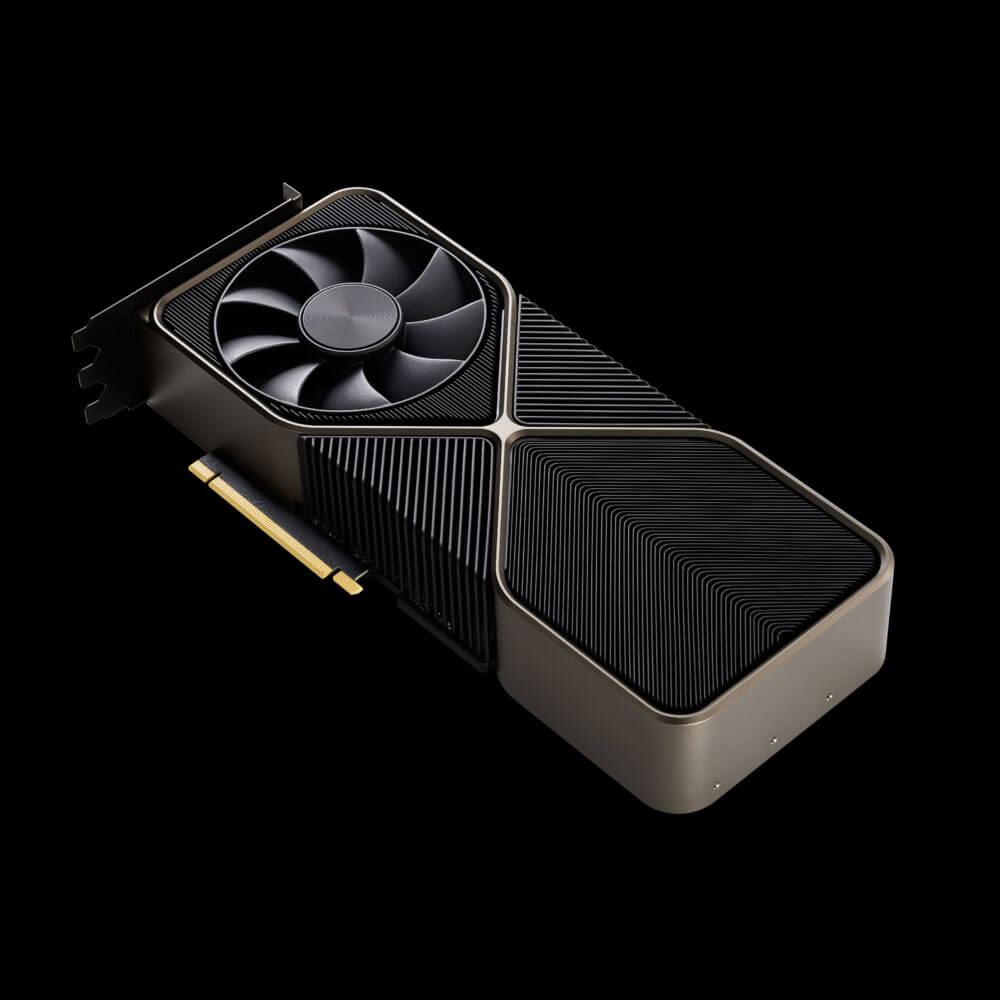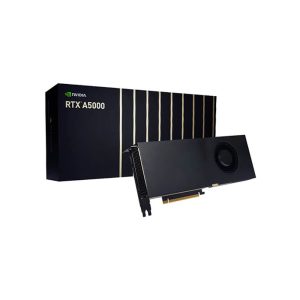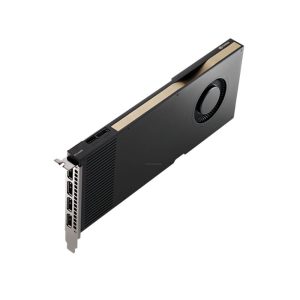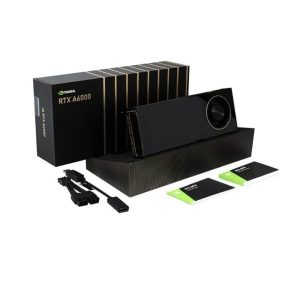NVIDIA GeForce RTX 3080 Ti Graphics Card 20 GB
The NVIDIA GeForce RTX 3080 Ti Graphics Card with 20GB GDDR6X memory delivers outstanding performance for gaming, AI, and creative workflows. Built on the NVIDIA Ampere architecture, it features advanced RT and Tensor Cores for real-time ray tracing and AI-enhanced graphics. Ideal for 4K gaming and intensive applications, the RTX 3080 Ti ensures exceptional visuals, smooth performance, and energy efficiency.
Min. Quantity – 5 Nos
Note: Below are the approximate and promotional prices. For the latest pricing and further details, please WhatsApp or call us at +91-8903657999.
₹102,000 ₹125,000
The GeForce RTX 3080 Ti 20 GB is an enthusiast-class graphics card by NVIDIA, launched in January 2022. Built on the 8 nm process, and based on the GA102 graphics processor, in its GA102-225-A1 variant, the card supports DirectX 12 Ultimate. This ensures that all modern games will run on GeForce RTX 3080 Ti 20 GB. Additionally, the DirectX 12 Ultimate capability guarantees support for hardware-raytracing, variable-rate shading and more, in upcoming video games. The GA102 graphics processor is a large chip with a die area of 628 mm² and 28,300 million transistors. Unlike the fully unlocked GeForce RTX 3090 Ti, which uses the same GPU but has all 10752 shaders enabled, NVIDIA has disabled some shading units on the GeForce RTX 3080 Ti 20 GB to reach the product’s target shader count. It features 10240 shading units, 320 texture mapping units, and 112 ROPs. Also included are 320 tensor cores which help improve the speed of machine learning applications. The card also has 80 raytracing acceleration cores. NVIDIA has paired 20 GB GDDR6X memory with the GeForce RTX 3080 Ti 20 GB, which are connected using a 320-bit memory interface. The GPU is operating at a frequency of 1335 MHz, which can be boosted up to 1665 MHz, memory is running at 1188 MHz (19 Gbps effective).
Being a dual-slot card, the NVIDIA GeForce RTX 3080 Ti 20 GB draws power from 1x 12-pin power connector, with power draw rated at 350 W maximum. Display outputs include: 1x HDMI 2.1, 3x DisplayPort 1.4a. GeForce RTX 3080 Ti 20 GB is connected to the rest of the system using a PCI-Express 4.0 x16 interface. The card’s dimensions are 285 mm x 112 mm x 40 mm, and it features a dual-slot cooling solution. Its price at launch was 1199 US Dollars.
Key Features:
- Ampere Architecture
- High CUDA Core Count
- Boasting more than 10,000 CUDA cores (approximately 10,240 in standard 3080 Ti), the 20 GB variant would deliver powerful parallel processing for next-gen games, GPU compute, and content creation pipelines.
- Second-Generation RT Cores
- Real-time ray tracing is accelerated up to 2× the performance of the Turing generation, enabling cinematic-quality lighting, reflections, and shadows in supported titles or 3D software.
- Third-Generation Tensor Cores
- Powers AI-driven features like DLSS, super-resolution, and real-time neural net–based upscaling or denoising, accelerating both gaming performance and creative tasks such as video or image enhancement.
- 20 GB GDDR6X Memory
- Expanded VRAM Headroom
- 20 GB of ultra-fast GDDR6X ensures the GPU can handle bigger 3D scenes, heavier texture loads, multi-stream 4K/8K editing, or memory-intensive AI workloads with reduced risk of VRAM bottlenecks.
- 320-bit or 384-bit Interface (Hypothetical)
- Delivers robust bandwidth for high-resolution gaming and data-driven applications, retaining the hallmark Ampere-era performance.
- AI and Ray Tracing Enhancements
- DLSS (Deep Learning Super Sampling)
- Tensor Cores facilitate advanced upscaling, boosting frame rates at high resolutions (4K, possibly 8K) without heavily compromising image fidelity.
- Real-Time Ray Tracing
- Second-gen RT cores enable advanced path tracing for photorealistic lighting, boosting visual immersion across modern AAA games and professional 3D rendering.
- High Performance, Potential Thermals and Power
- TDP around ~350–370W
- Similar or slightly higher than the standard 3080 Ti (12GB), requiring a robust power supply (850–1000W recommended) and ample case airflow.
- Custom Cooling Solutions
- AIB (Add-in-Board) partners typically employ multi-fan or hybrid liquid cooling solutions to manage the thermal output and maintain stable clock speeds.
- Connectivity and Display Output
- HDMI 2.1 and DisplayPort 1.4a
- Supports 4K at 120Hz and up to 8K at 60Hz on compatible displays, ideal for gamers and creators aiming at ultra-high resolution setups.
- NVIDIA G-SYNC
- Delivers smooth, tear-free gaming, aligning frame output with monitor refresh to reduce stutter and input lag.
- NVIDIA Studio for Creators
- Accelerated Content Creation
- With 20 GB of VRAM, advanced compute hardware, and specialized drivers, creators can enjoy faster renders, smoother editing timelines, and AI-driven features in Adobe Premiere, DaVinci Resolve, Blender, and more.
- AI-Assisted Tools
- Tensor Cores enable background removal, color matching, upscaling, or style transfer, elevating efficiency in creative pipelines.
Applications:
- 4K/8K Gaming
- Ultra Settings: High frame rates at 4K with AAA titles, even leveraging real-time ray tracing, thanks to the card’s robust CUDA core count and fast memory.
- Enthusiast eSports: At 1440p or 1080p, the card delivers extremely high FPS for competitive gaming, aided by NVIDIA Reflex for minimal latency.
- Content Creation & 3D Rendering
- High-Resolution Video Editing: Handles multi-stream 4K, or up to 8K footage, in professional editing software with minimal slowdowns.
- 3D Modeling/Animation: Large VRAM pool supports extensive textures and geometry in tools like Maya, 3ds Max, or Cinema 4D.
- AI & Data Processing
- Neural Net Development: While not a data center GPU, the robust VRAM and Tensor Cores let smaller AI training or real-time inference tasks run efficiently.
- Data Visualization: HPC-lite tasks or GPU-accelerated frameworks (RAPIDS, cuDNN) can benefit from the parallel computing resources and expanded memory.
- Virtual Reality & AR
- High-Fidelity VR Experiences: At elevated resolutions and refresh rates, immersive VR workloads run smoothly, beneficial for advanced simulations, design, or gaming.
Why Choose the NVIDIA GeForce RTX 3080 Ti 20 GB?
- Expanded Memory for Intensive Workloads
- The rumored 20 GB VRAM suits higher memory demands than the standard 12GB variant, reducing bottlenecks in massive 3D scenes, 8K workflows, or large AI models.
- Robust AI & Ray Tracing Features
- Second-gen RT Cores and third-gen Tensor Cores deliver advanced real-time ray tracing and AI-based upscaling (DLSS), bridging gaming performance and creative acceleration.
- Near-Flagship Gaming and Rendering
- Offers performance close to the RTX 3090 series in many scenarios, but potentially at a (hypothetically) more competitive cost or slightly lower power usage.
- NVIDIA Ecosystem & Drivers
- Ongoing driver optimizations, NVIDIA Reflex, G-SYNC support, and Game Ready or Studio drivers ensure wide-ranging compatibility and performance improvements over time.
- Future-Proof Architecture
- Ampere-based design with advanced features like PCIe 4.0, HDMI 2.1, and DirectX 12 Ultimate compliance ensures longevity in the face of evolving software and gaming engines.
| Product Name | NVIDIA GeForce RTX 3080 Ti |
| Manufacturer | NVIDIA |
| Memory | 20GB |
| Base Clock | 1335 MHz |
| Boost Clock | 1665 MHz |
| Memory Bus | 320 bit |
| Bandwidth | 760.3 GB/s |
| TDP | 350W |
| PSU | 750 W |
| Outputs | 1x HDMI 2.1,3x DisplayPort 1.4a |
| Power Connectors | 1x 12-pin |
| Maximum Resolution | 7680 x 4320 (8K) |

